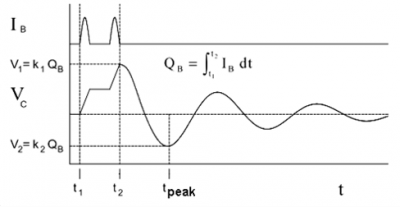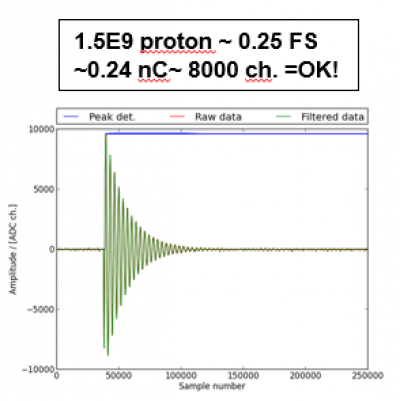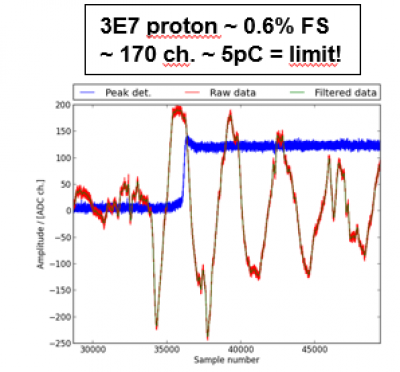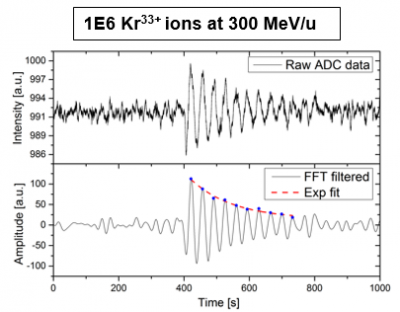Wiki
User Tools
Sidebar
rt_improvement_by_post-processing
Table of Contents
RT Improvement by Post-Processing
Basic Principle
- bunch of charged particles excites damped oscillation in electronic circuit of the RT
- oscillation amplitude is proportional to total charge of particle bunch
- existing GSI RT: signal fed to peak detector prone to noise at maximum position
- large dynamic range: ~ 120 dB.
- typical resolution: ~10 pCRMS (6×10^7 protons)
- for high current operation resolution drops to 100 nC (6×10^11 protons)
→ insufficient e.g. for transmission control
Bunch Charge determination
[from: “A High Stability Intensity Monitoring System”, M.A. Clarke-Gayther, RAL, Didcot (UK), presented on EPAC, Sitges (E) 1996]
Courtesy of A. Reiter
Post-Processing of RT Oscillation Data
- idea: : resonant frequency ω0 and decay time constant λ, are fixed by hardware
- omission of inexact peak detector
→ improved RT resolution by digitization of oscillation data, FFT filtering and envelope fit
Algorithm for bunch charge determination
rt_improvement_by_post-processing.txt · Last modified: 2019/02/06 16:11 by vschaefer




